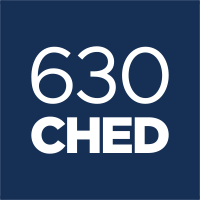New figures from the City of Edmonton show that two-thirds of residents can’t afford a home valued at $360,000, which is what these days is considered an averaged-price product. That’s the price of a so-called “typical home” the city uses every year when it calculates property taxes for the budget.

And infill properties are way more expensive than that, which is one explanation why council’s hopes of seeing more infill housing hasn’t happened.
“I don’t think that’s a surprise, really,” Councillor Andrew Knack said. “When you look at housing in most every mature community, you don’t have the variety that you see in newer neighbourhoods, so it’s hard to get that range of prices.”
READ MORE: City looking at new ways to fast-track infill in older areas of Edmonton
What you wind up seeing is single-family homes at one end of the scale in the $500,000 – $600,000 range and higher in established neighbourhoods. Apartment condos are what’s most commonly available as a starter property for first-time home buyers.
The new buzz phrase in the industry is the “missing middle.” Councillor Michael Walters identified that need as a possibility for development on the Northlands property, once the area redevelopment plan is worked on by council.
The report also said the current rules for building medium-scale housing in mature neighbourhoods is extremely difficult because the current rules for multi-family housing go against what developers want to build. Eighty-eight percent of the time, developers had to go to get what’s known as a “variance” to get the rules changed for that particular property, so they could go ahead with their plans.

Get weekly money news
“We’re really stuck with just one set of pricing that’s just getting higher and higher which is making it more and more out of reach of the average family, which is what the report shows,” Knack said.
He’s hoping council can set new rules that can solve a lot of common problems. Knack is also suggesting that more multi-family development will come on the market, especially along transit routes where home buyers have to find a lower price point.
“We’ve identified those locations. I think it’s time for council to actually change the zoning up front to help reduce the barriers to actually make that housing choice available. Because it is a gap.”
Changes, Knack said, are happening in certain pockets of the city in older neighbourhoods.
“They are just wrapping up building a 10- unit row house right on 156 Street, across from the library. Those homes are going to start in price at $350,000. Having new housing in a mature community starting at $350,000 is something I haven’t seen in a very long time. And that is actually very competitive with the suburbs.”
The pair of reports, an interim update on the housing situation, will be reviewed by council’s Urban Planning Committee on Wednesday. An action plan is expected to be put in place some time next year.










Comments